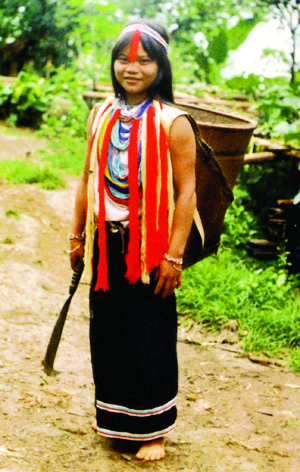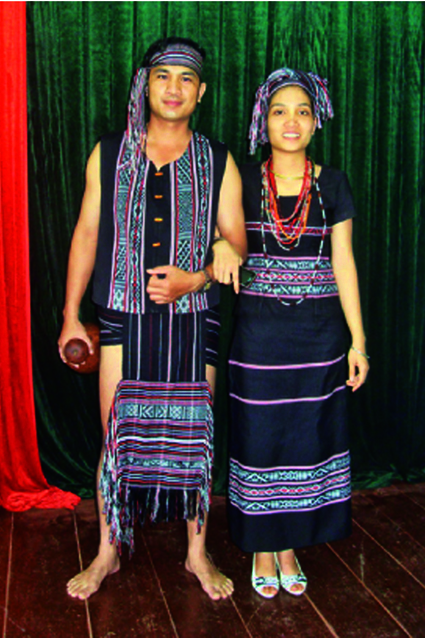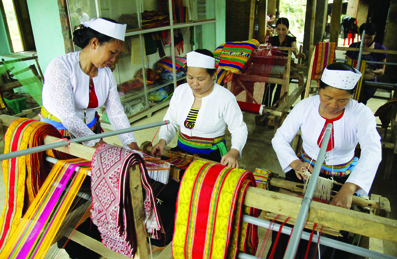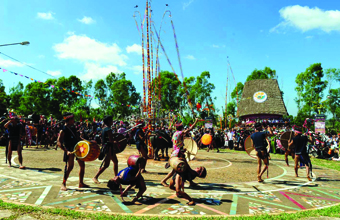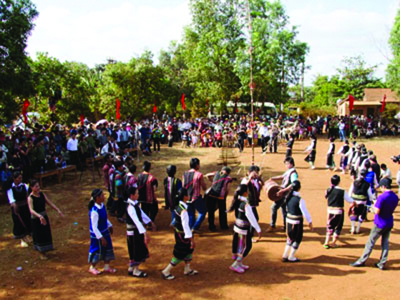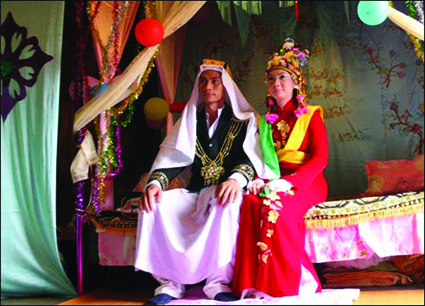>>Worship customs of the Co-tu
Ta Thi Tam
Ethnology Institute
Progieram, a ceremony to pray for good harvest, is the most important farming ritual for the Co Tu, a Mon-Khmer language ethnic group concentrated in the southern provinces of Quang Nam, Da Nang and Thua Thien Hue.
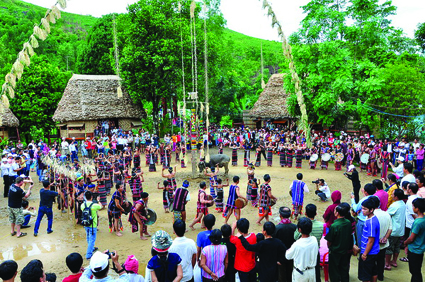 |
Pray-for-good-harvest ceremony of the Co Tu in Dong Giang district, Quang Nam provine__Photo: Internet |
With a population of nearly 61,600, the Co Tu live mainly on rice cultivation. They grow rice in mountainous areas with difficult farming conditions such as infertile soil, low rainfall, wild animal attack and rudimentary farming tools.
The Co Tu believe rice has its own spirit which can intervene in the growth of rice. That’s why every Spring before a new crop starts, the Co Tu hold progieram to win the support of the rice god to enjoy bumper crops, happiness and prosperity.
The Co Tu also have many taboos in respect for the sacred rice spirit. They neither fertilize rice nor use iron tools to cut it for fear of dirtying and hurting the rice spirit.
In progieram, the rice god is escorted from the field to the barn on an odd date since even date is regarded as bad date. On the way home from the field, a string is hung across every stream for the rice god to pass without getting wet while flowers are placed at every crossroads to show the direction for the god. A stairway must be made at the barn for the rice god. Arriving home, a ceremony is held for the rice god to enter the barn. Sacrifice of this ceremony is a pig and a chicken whose blood is poured onto the stairway up the barn. A hollow bamboo tree is stuck into the rice heap in the barn through the floor under which family members are sitting. The family owner then pours rice wine into the bamboo tree onto the heads of family members sitting under the floor. If the wine flows onto the head of the family owner’s wife, the family is believed to get a bumper crop this year. A long bamboo string, which symbolizes the life of rice, is also tied by the wife of the family owner to the barn at one end and to the home at the other end as the way for the rice god to travel. As the rice god settles at the barn, baskets and packages are not supposed to be stored there. Closing the formality to escort the rice god home, the family and villagers drink ruou can (rice wine drunk out of a jar through stalks) together.
An indispensable formality of the ceremony to pray for good harvest is buffalo stabbing conducted at nha rong (communal house), the place for community rituals and gathering in the Truong Son mountain range-Central Highlands region. This formality reflects the group’s beliefs in fertility. Villagers erect a four-meter pole made of a cotton tree beautifully decorated with animal-shaped paper objects which reflect the group’s view of space and life. The sacrificial buffalo is tied to the pole and killed to the sound of gong and drum beats in the presence of villagers walking around the pole in their traditional attires. The head, tail and intestines of the buffalo are then placed on a tray under the pole as offerings to the gods. The village sorcerer conducts the sacrificial ritual to pray for a bumper crop for the village.
Another important farming ceremony of the Co Tu is the praying-for-rain ritual which is held when rice starts developing ears. A forest tree, which symbolizes the growth of rice, is erected on which the blood of a sacrificial chicken and pig is poured. Offerings of the ceremony include the head of the chicken put on the top of the tree, the livers of the chicken and pig put in a basket hung on the tree and a jar of ruou can placed under the tree. When the offering ritual finishes, villagers have a ruou can party.
After harvest, the Co Tu hold a thanksgiving ceremony dedicated to the farming gods. In this ceremony, villagers spend three days catching fish, hunting animals and picking up forest products without using any tools but their hands. In the evening of the third day, villagers gather at nha rong, bringing wine, sticky rice in bamboo tubes and their gains in the three days to make a feast. This occasion is a chance for villagers who have married persons in other villages to come back home. Before the feast, the village head conducts a ritual to win the support of the gods for peace and prosperity for the whole village and every family. The party lasts throughout the night during which villagers dance and cheer around the fire to the sound of gong and drum beats, throwing cloth and sticky rice at one another and hoping for luck and prosperity.-
